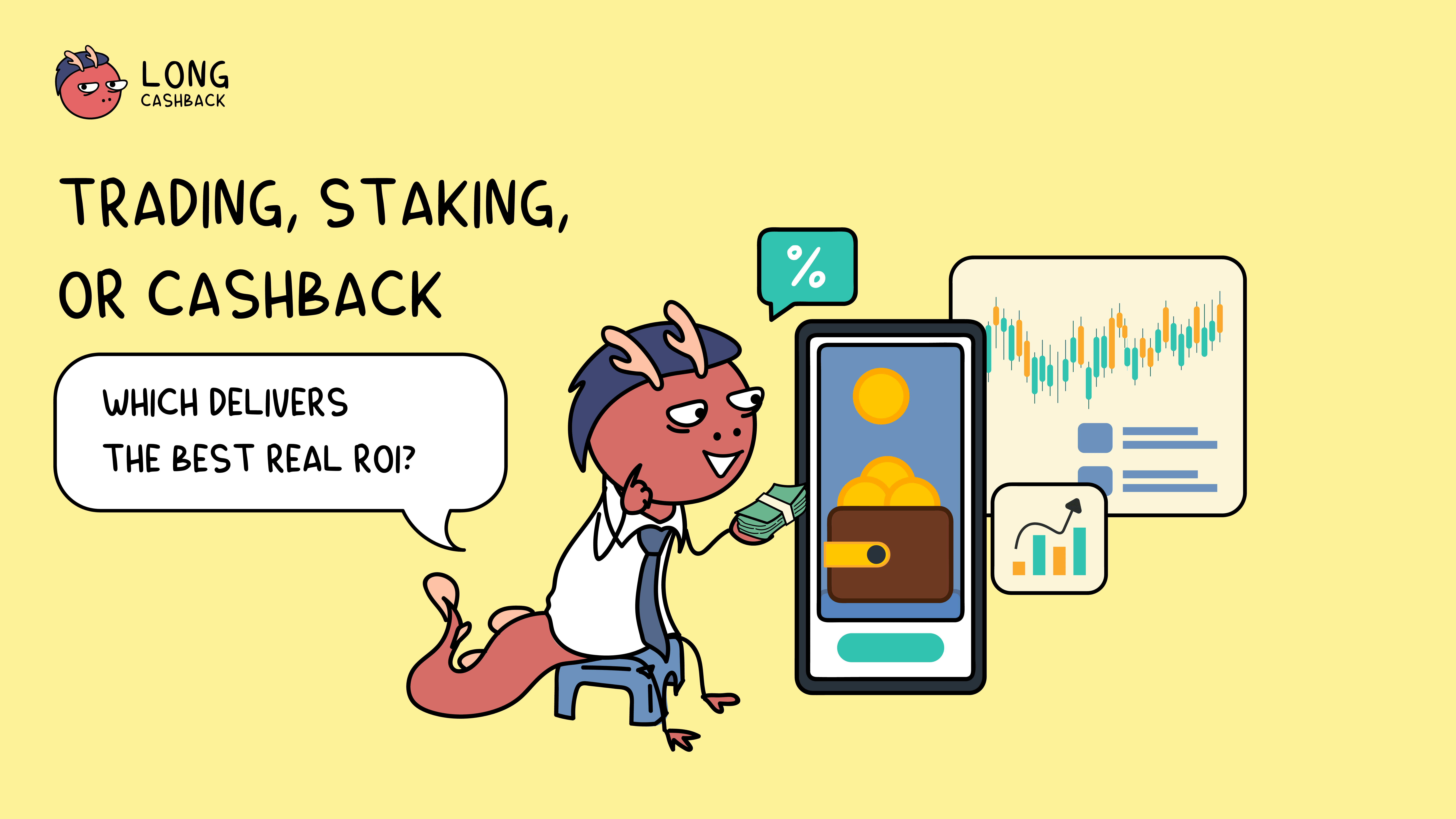October 23, 2025

The crypto market never stands still — sometimes it surges, sometimes it crashes, and sometimes… it simply goes quiet.
A sideways market, or “sideway” phase, is often the most frustrating time for traders: low volatility, few swing opportunities, yet trading fees keep quietly adding up.
For those using high-frequency strategies like grid bots, market making, or scalping, sideway periods aren’t necessarily disastrous. But to actually make a profit, every cost must be accounted for. This is where cashback becomes critical by cutting down trading fees, it directly lifts your net PnL. With rebate programs offering up to 50% fee returns like Lóng Cashback, that difference can easily turn a breakeven month into a profitable one.
A sideways market refers to a phase where prices move within a tight range, without a clear uptrend or downtrend.
For long-term investors, it’s a time to accumulate positions. For day traders, it’s a place to catch small waves. For scalpers and market makers, it’s an arena for continuous, small-margin opportunities.
However, traders usually face two core challenges:
1️⃣ Thin profit margins per trade.
When your expected gain is only a few basis points, the actual dollar profit per trade is minimal.
2️⃣ Fixed costs remain.
Trading fees, slippage, and funding rates still apply regardless of market direction. In high-frequency setups, these costs can pile up faster than your gross gains, eventually eating away your profits entirely.
That’s why cost control is a survival skill in a sideways market.
Cashback is essentially a refund on a portion of the trading fees you’ve already paid to an exchange.
When profit margins are tight, even a small reduction in net fees directly increases your bottom line. Compared to other ways of improving profitability — like optimizing trade execution, reducing slippage, or increasing capital — cashback is the most straightforward, instantly effective lever.
Think of it this way: if you earn 0.03% per trade before fees, and average trading costs eat up 0.02–0.05% (depending on exchange, maker/taker status, and VIP tier), then a 20–50% rebate can represent a major portion — even all — of your gross profit.
In real scenarios with large volumes, cashback can turn an almost breakeven strategy into a consistently profitable one. That’s why many professional desks and individual traders treat rebates as an essential part of their business model.
Suppose you run a trading bot for a month, with each order worth around 2,000 USDT, and you execute 500 trades in total.
With an average pre-fee profit of 0.03% per trade, that’s 0.6 USDT per order, or a gross profit of 300 USDT.
Now, if your average trading fee is between 0.02–0.05% depending on maker/taker type, total fees could range from 200 to 500 USDT.
That means in many cases, fees can exceed your profits, leaving you in the red even if your strategy performs correctly.
By joining a cashback program with 50% rebates, you’d recover a substantial amount of those fees — potentially shifting your results from “break-even or small loss” to solidly profitable.
It’s a simple mechanism, but it works.
Cashback isn’t just a small refund — it changes how you structure your strategy.
Instead of ramping up leverage or widening your grids to offset costs, you can maintain safe position sizes, focus on limit orders to maximize maker rates, and run multiple bots on high-liquidity pairs — keeping steady profits without unnecessary risk.
In this way, cashback acts like “cost insurance” — allowing traders to preserve their trading edge without taking on extra liquidation or slippage risks.
If rebates are paid in stablecoins or directly usable credits, they also serve a technical purpose: reinvested cashback compounds your working capital and accelerates capital turnover, boosting total monthly returns.
Some traders misunderstand cashback as a magic fix and overlook risk management.
First, rebates only reduce transaction costs — they don’t eliminate market risk. You still need to handle slippage, funding rates, latency, and capital allocation.
Second, cashback terms and rates vary between partners — always read the details: payout methods, eligibility, and timing.
Finally, many exchanges have anti–wash trading policies or limit rebates for suspicious activity, so transparency in strategy execution is key.
In this context, programs like Lóng Cashback are especially valuable for traders navigating sideways markets.
Long offers up to 50% rebates across major CEXs, with automatic monthly payouts — perfect for scalpers and grid traders who need predictable cashflow for reinvestment or withdrawal.
The system is designed for high-frequency practicality:
Many in the community have reported significant fee savings, helping them maintain positive net PnL even during prolonged sideways phases.
Using cashback effectively requires a systematic mindset.
1️⃣ Identify key cost drains: maker/taker structure, slippage, funding rates.
2️⃣ Optimize execution: increase maker ratio when possible, choose pairs with good liquidity, and activate cashback before starting your trading cycle.
3️⃣ Measure results: run A/B tests — same bot, same parameters, one account with cashback and one without — and compare net PnL after a full cycle.
4️⃣ Track payouts: include rebates in your monthly P&L reporting for accurate financial insight.
A sideways market isn’t a “no-profit” environment — not if your strategy is structured right.
Cashback isn’t a marketing gimmick; with the right program and disciplined use, it’s a real financial tool that protects and enhances your net PnL.
For scalpers, market makers, and grid traders alike, optimizing fees and combining quality rebate programs like Lóng Cashback is an essential step in turning “small edges” into sustainable profits.
If you’re running bots or considering scalping in a low-volatility phase, take a few minutes to check which cashback programs you qualify for.
That steady monthly rebate might just be the difference between hard work and real profit.

Compare the advantages and disadvantages of “bot trading” and “copy trading” for earning rebates when trading digital assets, helping investors choose the most profitable approach.
long cashback crypto cashback bot trading copy trade
Tham gia ngay, săn Airdrop – trúng thưởng tới tấp cùng Bybit
BYBIT cashbackcrypto futurestrading
In the crypto market, trading, staking, and cashback are three common ways to earn from digital assets. This article compares their real ROI, highlights when cashback can outperform the others, and explains how traders can optimize their net returns.
ROI cashbackcrypto staking tradingfutures